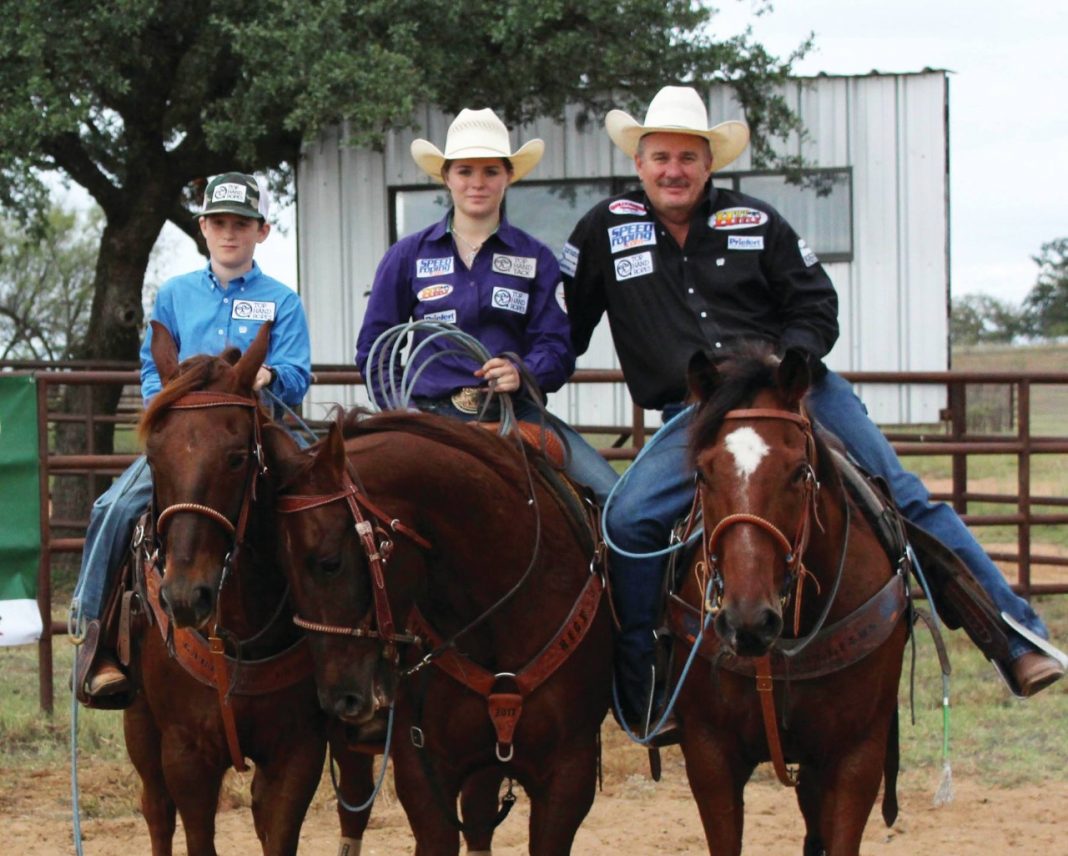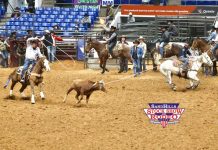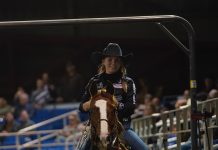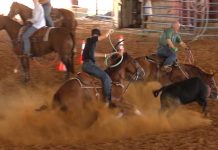Is it the horse… or horsemanship?
Recently at a jackpot I watched a young girl whose head horse was ducking out hard. It was pretty scary and like most people watching I assumed he just wasn’t that great of a horse. Not long afterwards she and her father came to me for private lessons. While we were playing back the video after our first roping session, we started looking at her feet and how they were in the wrong place. When she threw her rope, she would squeeze with her right leg and open her left leg with all her weight in her right stirrup.
I was completely amazed how, after spending 30 or 45 minutes on the Speed Trainer, she began use her legs correctly. She rode very well, but it was a habit she was unaware of. Once she was using her legs and feet correctly, she was able to handle steers and set the corner up much better. Her dad was much the same way. When he threw his rope, he would unintentionally squeeze with both legs. His horse is very athletic and fast with a lot of buttons. It took a little longer for Dad to correct this habit because he’s been roping for 20 years and using his long legs to hang on with. It was incredible how much his horse relaxed and quit climbing, enabling him to set his corners up.
It’s truly amazing how many mistakes we, as team ropers, make with our hands and feet. We get mad at our horse for not working correctly. But we have a tendency to give up our riding to be able to catch the cow. The difference in how these two horses looked and worked after just a couple of days was mind-blowing. In the beginning they looked out of control.
If you have a horse with a lot of buttons and feeling, that means he works off leg pressure. You need to be aware of when you’re doing things wrong. When it feels like your horse is making mistakes, there’s a good chance it’s pilot error. That’s just one of the reasons I love using video to teach. There’s no argument once we freeze the frame. It’s obvious where your feet and hands are and whether you’re the cause of what is happening with your horse.
You need to be able to go slowly on a dummy and do things correctly. That means doing it at a walk. It’s surprising how many #5 and #6 ropers cannot stand to rope the dummy at a walk. It exposes holes in the foundation of your roping. It’s hard to improve without a good foundation to build on. The lack of a good foundation is why a lot of team ropers’ numbers never change.
You should be able to walk up behind the Hot Heels on your horse slowly, rope it, pull your slack, dally, keep your horse moving forward, then turn off and go left, and face at a walk without making your horse change speed. If you cannot do everything controlled at this pace where your feet and hands are in the correct position – it will be very difficult to do it correctly while running live cattle. Most professional sports teams make their players walk through drills – to make sure their feet are in the right place. That’s why I believe in slowing things down to become more consistent.






